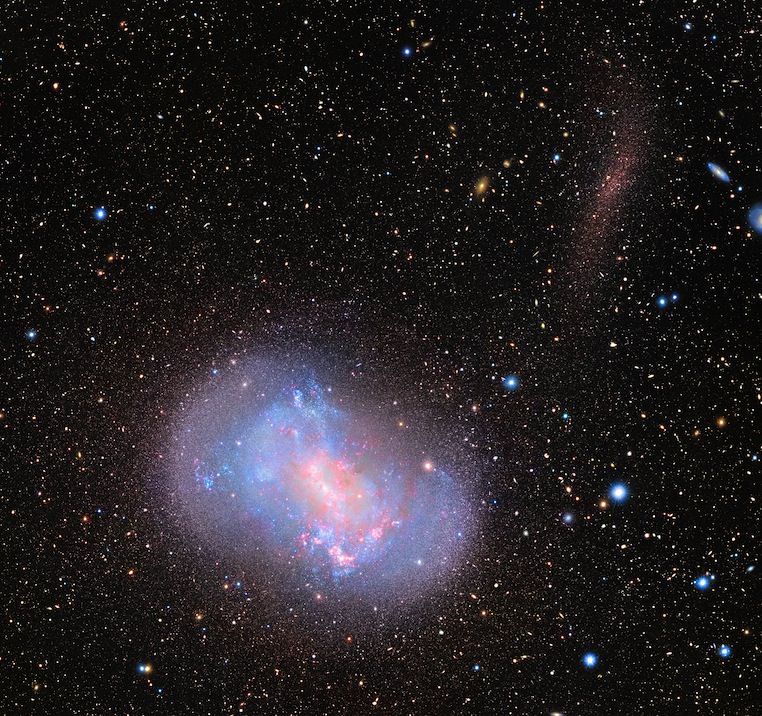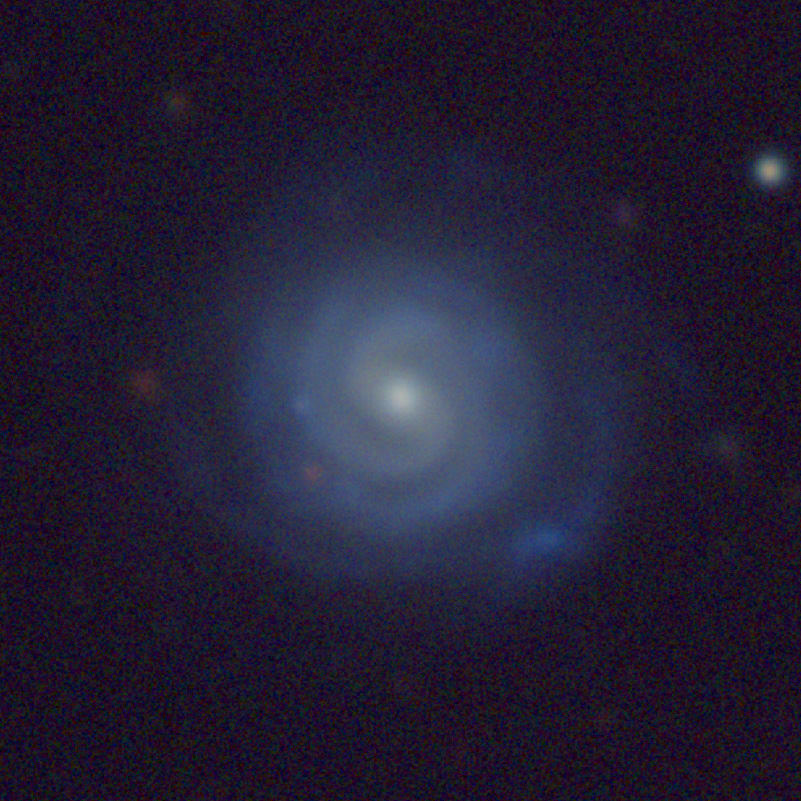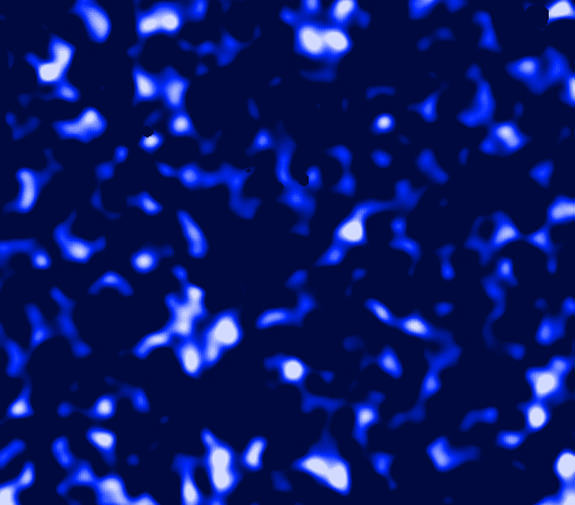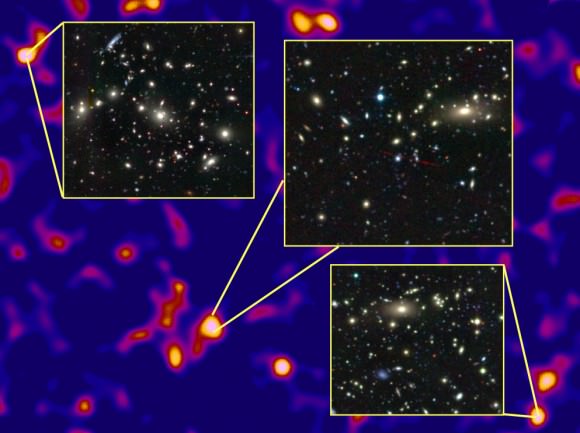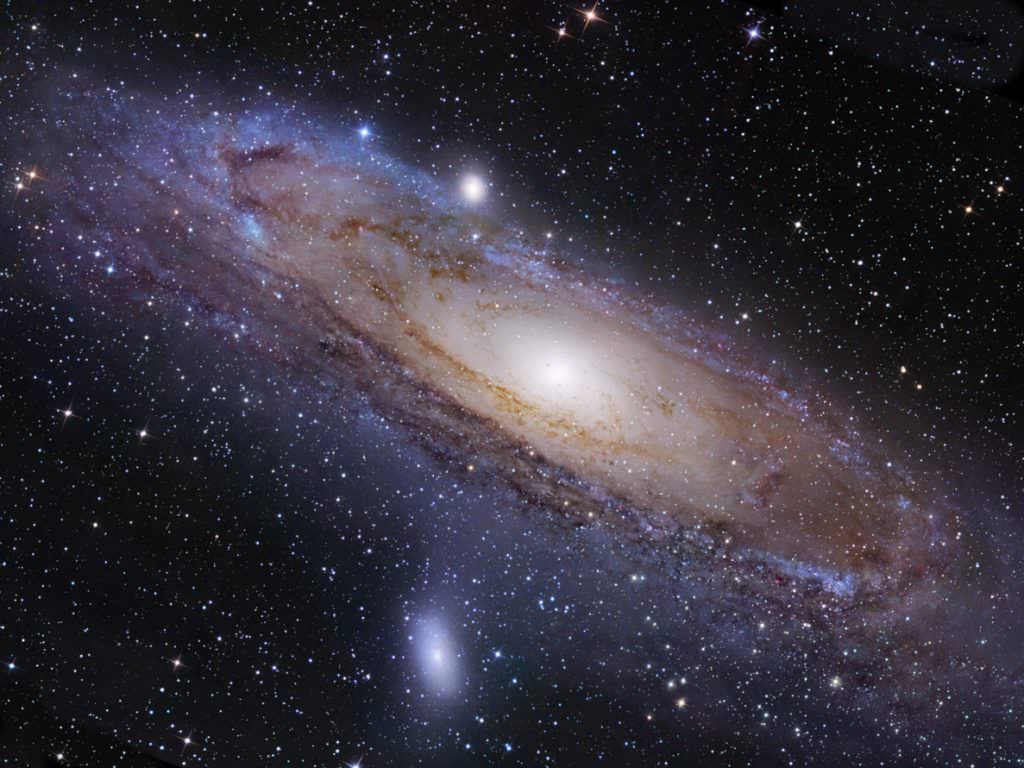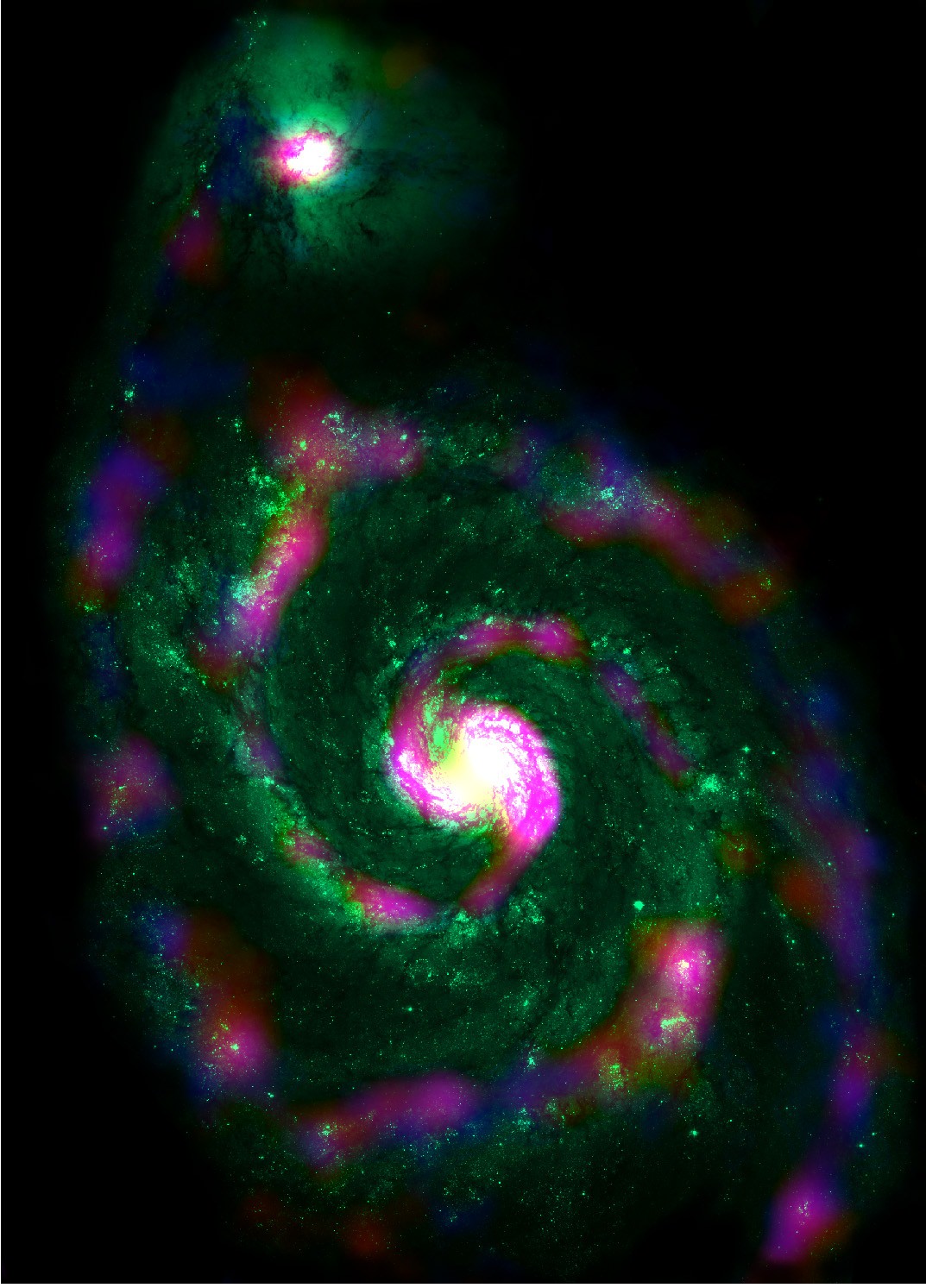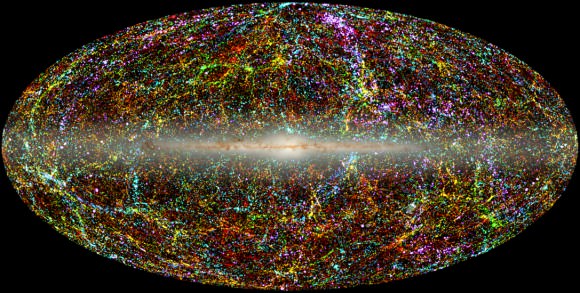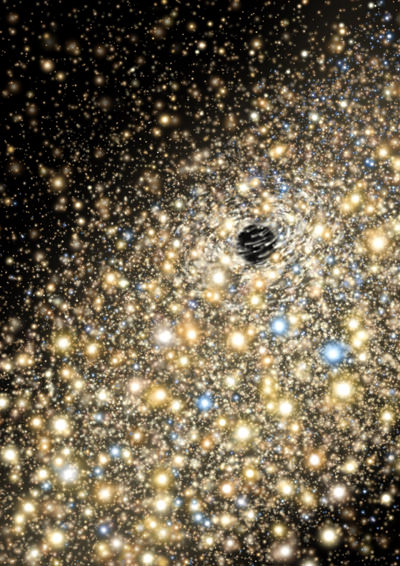[/caption]
Greetings, fellow SkyWatchers! What an awesome display of planets! Please take the time to walk outdoors just after skydark – regardless of where you live – and enjoy the bright display of Venus and Jupiter! However, this isn’t the only planetary action going on this week… Mars and M96 pair up, as well as Uranus and the Moon. There’s even a Southern Hemisphere meteor shower to enjoy! Pretty exciting, huh? Join the party by getting out your binoculars or telescopes and meet me for more in the backyard…
Monday, March 12 – No. That’s not the “headlights” of a UFO on the western horizon tonight… It’s a very cool pairing of Venus and Jupiter! It’s not often you see the two visually brightest planets making a close visual pass at each other and tonight you’ll spot the inner planet to the south and the outer planet to the north. This would make a great photo opportunity! Why not consider adding something interesting to your picture like a scenic building, tree, or even a person? Watch in the days ahead as Jupiter appears to stay in the same spot at the same time, yet Venus will climb higher.
Tonight let’s return again to NGC 2362 and start at the cluster’s north-northeast corner to have a look at a single, unusual star – UW Canis Majoris. At magnitude 4.9, this super-giant spectroscopic binary is one of the most massive and luminous in our galaxy. Its two stars are separated by only 27 million kilometers (17 million miles) and revolve around each other at a frenzied pace – in less than four and a half days. This speed means the stars themselves are flattened and would appear to be almost egg-shaped. The primary itself is shedding material that’s being collected by the secondary star.
Now drop southwest of NGC 2362 for another open cluster – NGC 2354 (Right Ascension: 7 : 14.3 – Declination: -25 : 44). While at best this will appear as a small, hazy patch to binoculars, NGC 2354 is actually a rich galactic cluster containing around 60 metal-poor members. As aperture and magnification increase, the cluster shows two delightful circle-like structures of stars, similar to a figure 8. Be sure to make a note… You’ve captured another Herschel 400 object!
Tuesday, March 13 – On this day in 1781, Uranus was discovered by William Herschel. Also on this day, in 1855, Percival Lowell was born in Boston. Educated at Harvard, Lowell went on to found the observatory which bears his name in Flagstaff, Arizona, and spent a lifetime studying Mars. During the early morning hours, you can honor Lowell by seeing Mars yourself – it’s best viewed when as high a possible on the ecliptic. While there won’t be a great many details, think of how many strides have been made since Lowell’s time and how advanced our knowledge of Mars has become!
Tonight let’s hop about four fingerwidths east-northeast of Sirius. Look for 5th magnitude SAO 152641 to guide you to a faint patch of stars in binoculars and a superb cluster in a telescope – NGC 2360 (Right Ascension: 7 : 17.8 – Declination: -15 : 37). Comprised of around eighty 10th magnitude and fainter stars, this particular cluster will look like a handful of diamond dust scattered on the sky. Discovered by Caroline Herschel in 1783, this intermediate-aged galactic cluster is home to red giants and heavy in metal abundance. Mark your notes, because not only is this a Herschel object, but is known as Caldwell 58 as well!
Wednesday, March 14 – Today is the birthday of Albert Einstein. Born in 1879, Einstein was one of the finest minds of our times. He developed the theory of gravity in terms of spacetime curvature – dependent on the energy density. Winner of the 1921 Physics Nobel prize, Einstein’s work on the photoelectric effect is the basis of modern light detectors.
Tonight let’s hop about a fistwidth north of bright Eta Canis Majoris and have a look at a “double cluster” – NGC 2383 (Right Ascension: 7 : 24.8 – Declination: -20 : 56) and NGC 2384 (Right Ascension: 7 : 25.1 – Declination: -21 : 02). Just showing in binoculars as a faint patch, this pair will begin resolution with larger scopes. Studied photometrically, it would appear these fairly young clusters have contaminated each other by sharing stars – which has also occurred in some clusters located in the Magellanic Clouds. Enjoy this unusual collection of stars…
Thursday, March 15 – Today celebrates the birth of Nicolas Lacaille. Born in 1713, Lacaille’s measurements confirmed the Earth’s equatorial bulge. He also named fourteen southern constellations. To honor Lacaille tonight, let’s begin some explorations in a constellation he named – Puppis!
For SkyWatchers living in high northern latitudes, you’ll never see all of this constellation, but there will be some things for you to explore, as well as a great deal for our friends in the southern hemisphere. The first is a Herschel object that lies directly on the galactic equator around five degrees north-northwest of Xi.
NGC 2421 (Right Ascension: 7 :36.3 – Declination: -20 : 37) is a magnitude 8.3 open cluster that will look like an exquisitely tiny “Brocchi’s Cluster” in binoculars and begin good resolution of its 50 or so members to an intermediate telescope, in an arrowhead-shaped pattern. It’s bright, it’s fairly easy to find, and it’s a great open cluster to add to your challenge study lists!
If you’re looking for a curiosity, then look no further than Leo and Mars. Tonight the happy red planet is situated just to the east of Messier 96 (Right Ascension: 10 : 46.8 – Declination: +11 : 49)! Enjoy celestial mechanics over the next few nights as Mars gently changes its position in relation with this distant galaxy… and gets much closer!
Friday, March 16 – On this day in 1926, Robert Goddard launched the first liquid-fuel rocket. But he was first noticed in 1907 when a cloud of smoke issued from a powder rocket fired in the basement of the physics building in Worcester Polytechnic Institute. Needless to say, the school took an interest in the work of this shy student. Thankfully they did not expel him, and thus began his lifetime of work in rocket science. Goddard was also the first to realize the full implications of rocketry for missiles and space flight, and his lifetime of work was dedicated to bringing this vision to realization. While most of what he did went unrecognized for many years, tonight we celebrate the name of Robert H. Goddard. This first flight may have gone only 12 meters, but forty years later on the date of his birth, Gemini 8 was launched, carrying Neil Armstrong and David Scott into orbit!
Let’s begin our observing evening with Mars. While you may have been keeping track of its position, did you know that it’s less than a degree away from a Messier object tonight? That’s right! You’ll find the dusty red planet just to the north of M96 (Right Ascension: 10 : 46.8 – Declination: +11 : 49).
Tonight we’ll pick up a challenge cluster and a planetary nebula on the Herschel list by returning to NGC 2421 and hopping about a fingerwidth northeast for NGC 2432 (Right Ascension: 7 : 40.9 – Declination: -19 : 05). This small, loose open cluster is rather dim and contains around 20 or so faint members shaped like the letter B. About another degree northeast is NGC 2440 – an elongated, small 11th magnitude planetary nebula. Look for its central star to cause a brightening and up the magnifying power to reveal it.
While out, be on watch for the Corona-Australids meteor shower. While the fall rate is low – 5 to 7 per hour – our friends in the southern hemisphere might stand a chance with this one!
Saturday, March 17 – On this day in 1958, the first solar-powered spacecraft was launched. Named Vanguard 1, it was an engineering test satellite. From its orbital position, the data taken from its transmission helped to redefine the true shape of the Earth.
Tonight let’s return to Xi Puppis and head less than a fingerwidth east-northeast for Herschel study NGC 2482 (Right Ascension: 7 : 54.9 – Declination: -24 : 18). At magnitude 7, this small fuzzy spot in binoculars will resolve into around two dozen stars to the telescope. Look for the diagonal chain of stars along its edge.
Now let’s have a look at an open cluster easily located in northeastern Orion. This 5.9 magnitude scattered group of stars may have been first observed by Giovanni Batista Hodierna in the mid-17th century. While bright enough to have been a Messier object, William Herschel added it to his log of discoveries on October 15, 1784, as H VIII.24. Of the 30 known stars associated with this 3,600 light-year distant group, the brightest is 50 million years old. A half-dozen of the cluster’s very brightest members can be seen in small scopes at mid-range powers. Look for NGC 2169 (Right Ascension: 6 : 08.4 – Declination: +13 : 57) slightly less than a fist width north-northeast of Betelguese and slightly south of Xi and Nu Orionis.
Sunday, March 18 – Although you can’t see it with just your eyes, Uranus is less than a degree from the Moon this morning. For some areas this could be an occultation, so be sure to check IOTA information!
Today in 1965, the first ever spacewalk was performed by Alexei Leonov onboard the Soviet Voskhod spacecraft. The “walk” only lasted around 20 minutes and Alexei had problems in re-entering the spacecraft because his space suit had enlarged slightly. Imagine his fear as he had to let air leak out of his space suit in order to squeeze back inside. When they landed off target in the heavily forested Ural Mountains, the crew of two had to spend the night in the woods surrounded by wolves. It took over twenty-four hours before they were located and workers had to chop their way through the forest and recover them on skis. Brave men!
Tonight let’s honor them by studying a small area which contains not only three Herschel objects – but two Messiers as well – M46 and M47. You’ll find them less than a handspan east of Sirius and about a fistwidth north of Xi Puppis.
The brighter of the two clusters is M47 (Right Ascension: 7 : 36.6 – Declination: -14 : 30) and at 1600 light-years away, it’s a glorious object for binoculars. It is filled with mixed magnitude stars that resolve fully to aperture with the double Struve 1211 near its center. While M47 is in itself a Herschel object, look just slightly north (about a field of view) to pick up another cluster which borders it. At magnitude 6.7, NGC 2423 isn’t as grand, but it contains more than two dozen fairly compressed faint stars with a lovely golden binary at its center.
Now return to M47 and hop east to locate M46 (Right Ascension: 7 : 41.8 – Declination: -14 : 49). While this star cluster will appear to be fainter and more compressed in binoculars, you’ll notice one star seems brighter than the rest. Using a telescope, you’ll soon discover the reason. 300 million year old M47 contains a Herschel planetary nebula known as NGC 2438 in its northern portion. The cluster contains around 150 resolvable stars and may involve as many as 500. The bright planetary nebula was first noted by Sir William Herschel and then again by John. While it would appear to be a member of the cluster, the planetary nebula is just a little closer to us than the cluster. Be sure to mark your notes… There’s a lot there in just a little area!
Until next week? May all of your journeys be at light speed!
Many thanks to John Chumack for the inspiring image!


